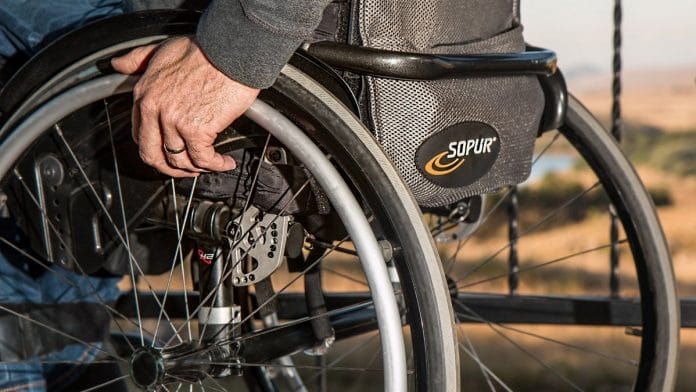Discussions about disability in India tend to revolve only around legal frameworks and infrastructure. While essential, these address only visible manifestations of a deeper challenge—persistent stigma permeating society and educational institutions. As someone who has navigated life with disabilities in both India and the United States, I’ve seen how exclusion often operates through unconscious biases, even in progressive environments. These entrenched attitudes often seem more difficult to dismantle than physical barriers.
Universities are society’s laboratories for progress, yet often replicate its deepest biases. Despite the Rights of Persons with Disabilities Act 2016 mandating five per cent reservation for PwDs in higher educational institutions, the reality differs sharply. According to the 2021-22 All India Survey on Higher Education, students with disabilities account for only 0.2 per cent of enrolment – a figure barely budging despite policy interventions. The issue extends beyond admission; students with disabilities remain absent from universities not due to a lack of ability, but because we’ve failed to create environments where they can thrive.
Retention tells another grim story. Despite legal mandates and scholarships, the Indian education system continues to fall short on the basics—from reasonable accommodations, accessible infrastructure, to support services. As a result, many students either opt not to enrol in higher education institutions or find themselves navigating unwelcoming terrain. Higher education becomes an exhausting obstacle course for them—driven not by academic inability but by lack of institutional readiness and empathy.
Sensitisation matters
Disability sensitisation is crucial at the university level, where young adults shape their professional identities, build relationships, and prepare for careers. These formative years matter—if universities ignore bias, they teach exclusion that follows students long after graduation. Consider your last injury or illness as part of your daily life. That’s disability. Society, largely desensitised to the struggles of disabled individuals, tends to respond with pity and charity, rather than equity and respect. Therefore, it is crucial to confront hidden biases and recognise disability as simply another way of being human.
Even as many campuses struggle to move beyond token gestures, some institutions are beginning to lead by example. The Office of Accessible Education at IIT-Delhi, the Office of Learning Support at Ashoka University, and the Office of Diversity and Inclusion at IIM-Bangalore have taken a thoughtful, campus-wide approach to accessibility. Accessibility is treated not as an add-on, but as fundamental to how education is delivered. Faculty is encouraged to reimagine how they design exams and lectures, so that students with disabilities aren’t left to fend for themselves and accommodations aren’t handed out as exceptions but recognised as rights.
The spirit of inclusion, for these institutions, goes beyond the classroom. SANGAM, IIT-Delhi’s intercollege sports competition, brought together 110 students with disabilities from 25 colleges across Delhi-NCR in March. Events included blind cricket, 100m race, 400m relay, as well as carom and table tennis. Similarly, Ashoka University’s Special Olympics Bharat – Ashoka Chapter engages students with intellectual disabilities in sports and recreational activities. Watching able-bodied and disabled students play side-by-side often challenges people’s assumptions about who gets to participate and what athleticism looks like.
IIM-Bangalore conducts disability sensitisation sessions during orientation, and again annually, for faculty and staff. Instead of treating accommodations as a one-off response, IIM-Bangalore systematically integrates accessibility into academics, infrastructure, and policy, ensuring that inclusion becomes everyone’s responsibility.
What truly stands out, however, is IIT-Delhi’s assistive technology lab, where students with disabilities help create the tools they actually need—from braille printers to smart canes for the visually impaired.
Also read: DPDP Act offers no special protection for disability data. It leaves PwDs vulnerable
Steps to ensure inclusivity
- Mandatory sensitisation workshops: Sensitisation workshops shouldn’t stop at accommodations—they must also help educators rethink how they see their students. Imagine a workshop where a professor no longer views a request for extra time in exams as “special treatment,” but as a sign of resilience in the face of unique challenges. These workshops should be grounded in real stories and lived experiences—for instance, by encouraging faculty to deliver lectures via screen readers, or attempt group work while managing sensory overload. The goal isn’t theatrics, after all—it’s empathy. These exercises challenge the unconscious divide between “us” and “them,” showing how easily roles can be reversed.
- Peer mentorship programmes: Matching students with and without disabilities for hands-on collaboration—in designing assistive tech, auditing campus spaces, or organising art exhibits—can shift the dynamic from sympathy to solidarity. When a student without disabilities sees their visually impaired classmates debug code with text-to-speech software, old beliefs about “capability” begin to fade. At IIM-Bangalore, for one, the Buddy Programme pairs incoming students with peers to help them navigate campus life, fostering mutual respect from day one.
- Transparent reporting on enrolment and retention: Both the government and private institutions must track how many students with disabilities join, stay, or leave. It can reveal where the system is falling short by exposing gaps and highlighting the support structures that need strengthening. Keeping an eye on STEM enrolment rates can help higher education institutes identify and fix problem areas, such as inaccessible labs or a lack of supportive faculty. Exit interviews, on the other hand, can shed light on issues such as unreadable course materials and missing accommodations. Appointing inclusion leads—ideally, individuals with disabilities—can help ensure that the issues of PwDs are both heard and resolved.
Change is possible when inclusion becomes a lived practice, not a policy footnote. As India aims to lead the subcontinent in education, it must recognise this truth: a nation cannot achieve greatness while systematically sidelining over two per cent of its population. Teachers must now stop asking, ‘How can I handle this student?’ and start asking, ‘How can I help this student succeed? Inclusion begins with a change in mindset.
Tarini Mohan is Manager, Accessibility and Inclusion in Higher Education at Jetri (formerly 9.9 Education), and author of the forthcoming memoir: Lifequake: A Story of Hope and Humanity (Juggernaut Books). Views are personal.
(Edited by Zoya Bhatti)






